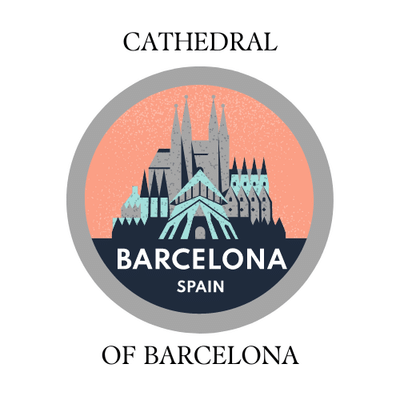Traditions of Cathedral of Barcelona
This tradition takes place during the city's La Mercè festival in September. A small egg is balanced on the water spout of a fountain inside the cathedral, and a group of dancers perform a dance around it. The goal is to keep the egg from falling off the spout. The tradition is said to bring good luck and prosperity.
Also Checkout: History Of Cathedral Of Barcelona
This tradition features giant figures made of papier-mache and cloth, representing various historical and mythological characters, as well as local figures from Barcelona's history. The procession takes place during various festivals throughout the year.
Recommended Read: How To Reach Cathedral Of Barcelona
Every year, a Christmas market is held in the square in front of the cathedral. The market features traditional Catalan Christmas decorations, such as "caganers" (figurines of people defecating) and "caga tió" (a wooden log that children beat with sticks to make it "poop" out presents).
Do Checkout: Exterior Of Cathedral Of Barcelona
The Escolania de Montserrat is a renowned boys' choir associated with the Cathedral of Barcelona traditions. Situated at the Montserrat Monastery near Barcelona, the choir has a rich musical heritage dating back centuries. Their angelic voices and performances captivate audiences, contributing to the cultural legacy of the region.
Read More: Facts About Cathedral Of Barcelona
The Cathedral of Barcelona traditions include the annual Patron Saint Festival, a vibrant celebration honoring Saint Eulalia. The festival, held in February, features lively processions, music, dance, and cultural performances. Locals and visitors alike gather to witness the colorful displays and immerse themselves in the rich heritage of Barcelona's patron saint.
Suggested Read: Places to Visit in Cathedral of Barcelona
FAQs About Cathedral of Barcelona Traditions
What is the Cathedral of Barcelona?
The Cathedral of Barcelona is a medieval Roman Catholic cathedral located in the Gothic Quarter of Barcelona, Catalonia, Spain. It is also known as the Cathedral of the Holy Cross and Saint Eulalia.
Also Read: Saints In Cathedral Of Barcelona
Who is Saint Eulalia?
Saint Eulalia is the patron saint of Barcelona. She was a young Christian girl who was martyred during the Roman Empire's persecution of Christians in the 4th century AD. Her story is celebrated in the Cathedral of Barcelona, where her tomb is located.
What are the traditions associated with the Cathedral of Barcelona?
One of the most famous traditions associated with the Cathedral of Barcelona is the "dancing egg" or "ou com balla" in Catalan. This tradition involves a hollowed-out egg being balanced on a fountain's jet of water, and then spinning around as the water pressure increases. The tradition takes place during the Feast of Corpus Christi, which is celebrated in June.
Is the Cathedral of Barcelona open to visitors?
Yes, the Cathedral of Barcelona is open to visitors for a fee. Visitors can explore the cathedral's interior and climb the stairs to the roof for stunning views of the city.
Also Read: Dress Code At Cathedral Of Barcelona
Are there any restrictions on dress when visiting the Cathedral of Barcelona?
Yes, visitors to the Cathedral of Barcelona are required to dress appropriately. This means that shorts, tank tops, and bare shoulders are not permitted. Additionally, visitors are asked to remove hats and sunglasses when entering the cathedral.
Also Check: Royal Palace of Madrid Tickets

